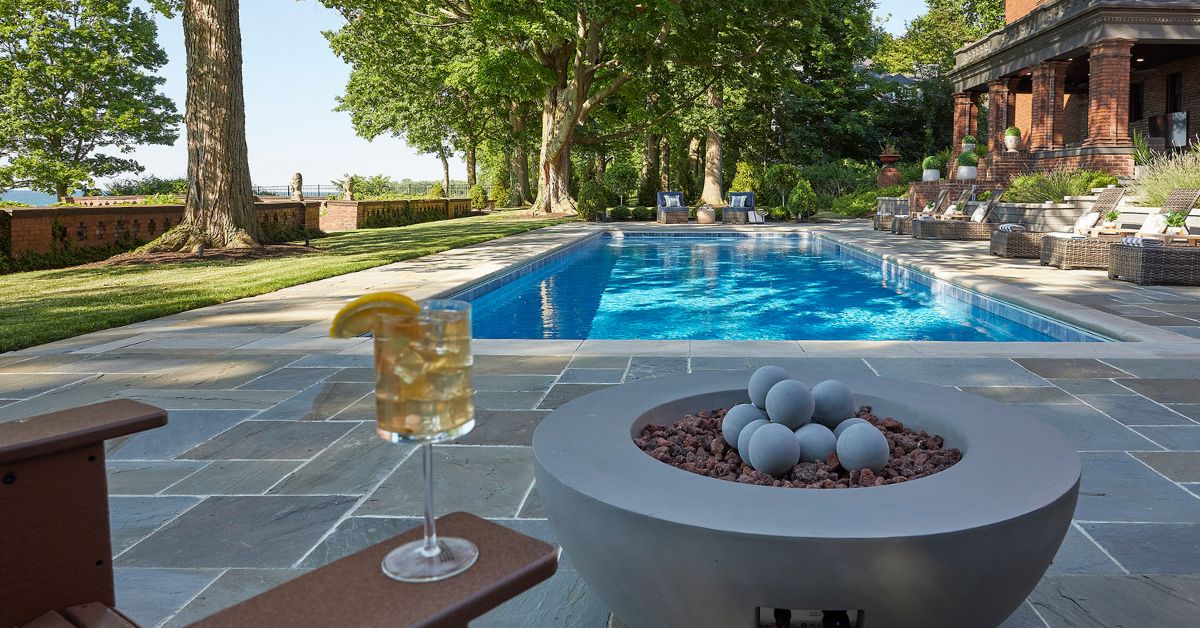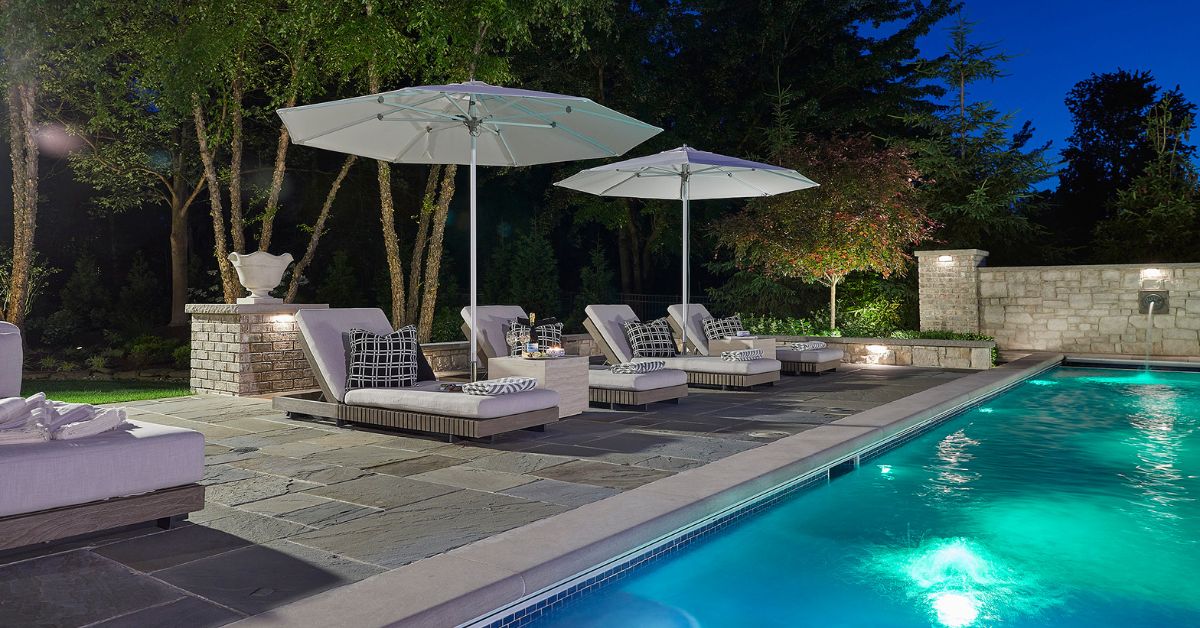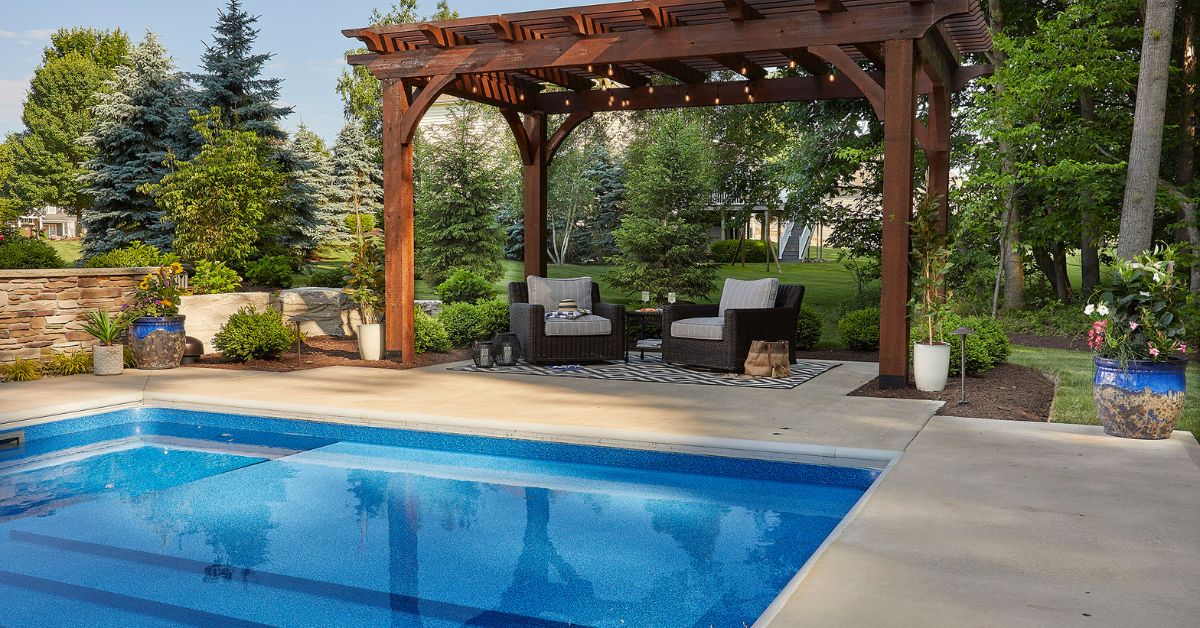Adding a swimming pool to your backyard is an exciting investment that can boost your home’s value and transform your outdoor space into an oasis. But timing is key when it comes to pool installation. Choosing the right time of year can save money, lower stress, and ensure your pool is ready when you want to use it.
If you’re wondering when is the best time of year to install a swimming pool, this guide will consider factors like climate, budget, and construction timelines. Whether you’re dreaming of sunny swim sessions or stylish poolside parties, we’ve got you covered.
Why Install a Pool?
Adding a pool to your property can significantly enhance your lifestyle and provide countless other benefits. Pools are perfect for creating a relaxing retreat right in your backyard, offering a private space to unwind, recharge, and escape the heat during warmer months. They also offer an excellent opportunity for fitness and wellness, enabling activities like swimming, water aerobics, or playing pool games.
Additionally, a pool is a centerpiece for social gatherings, making it ideal for hosting parties, family get-togethers, or casual evenings with friends. Beyond lifestyle perks, a well-designed pool can increase your property value, making it a worthwhile investment. Whether for recreation, exercise, or aesthetics, a pool can transform your outdoor space into a versatile and enjoyable haven.

Factors To Consider Before Installing a Pool
Before we jump into the best season for pool installation, it’s important to think about specific factors that can impact the timing.
Climate and Weather in Your Area
Your local climate plays a huge role in determining when to install a pool. Locations like Florida or Southern California often have mild year-round weather, meaning pool installation can occur at nearly any time. For those in northern regions, work generally occurs between March and November, although it can occur outside of those times depending on the specifics of the project.
Local Building Codes and Regulations
Researching local building codes and requirements is critical. Starting the planning process early will help you avoid legal and logistical hiccups.
Budget and Financial Planning
Your budget may dictate timing. Prices vary, depending on size, materials, and features, so it’s essential to prepare financially.
Start planning early to get a better understanding of your options.
The Best Times for Installation
Now that you’ve considered the key factors, let’s break down the pros and cons of pool installation for each season.
Spring (March–May)
Starting in spring is common, but you’ll have to wait for your new pool to be ready. On the plus side, you’ll have comfortable weather conditions for construction in most areas. However, it’s a high-demand season for contractors, causing longer wait times.
Summer (June–August)
Summertime is ideal for quick installation, thanks to long daylight hours. There’s plenty of time to enjoy the pool immediately after installation. Unfortunately, you also run the risk of not having your pool ready until the end of summer. Contractors are usually extremely busy during this period, which might mean fewer scheduling options.
Fall (September–November)
Fall is a great time to start a project, since you’ll be able to enjoy it come spring. Furthermore, warm ground in most regions means easier installation. One downside is that if your area experiences early winters, construction could be delayed.
Winter (December–February)
The biggest advantage of construction during winter is the opportunity for planning, as weather conditions may slow or even stop installation. There’s plenty of time to prepare the pool for the next season. Just keep in mind that you may face challenges in cold climates, such as frozen soil that makes work more difficult. You should also consider that some contractors may not operate during extremely harsh winters.
The Sweet Spot
While you can plan construction any time of year, if you want your pool to be ready for use in spring, starting as early as possible is key.

Preparing for Installation
A successful pool installation starts long before the first shovel hits the ground. Here’s how to prepare.
1. Choose the Right Pool Type
Do you want a linear or concrete pool? Consider the layout of your backyard, your budget, and your lifestyle needs when deciding.
2. Pick Your Design and Features
Research designs and features that suit your taste, from infinity edges to tanning ledges and built-in spas. Just remember that customization can add extra time to your installation process.
3. Hire a Trusted Contractor
Research contractors and read customer reviews to find someone reliable. Book early, especially during high-demand seasons.
4. Obtain Permits
Start the permitting process early to avoid delays. Work with your contractor to ensure all the necessary paperwork is completed.
The Installation Process
Knowing what to expect can help you feel more in control during the installation process.
What Happens During Installation?
- Excavation: The pool area is dug out and prepped. Depending on if your pool is concrete or linear, the appropriate structure is then installed.
- Construction (for in-ground pools): This involves laying down the shell (usually a fiberglass, concrete, or vinyl liner).
- Plumbing and electrical setup: The systems that keep your pool running are installed.
- Decking and landscaping: The surrounding area is smoothed out and designed for enjoyment.
Common Challenges and Solutions
- Weather delays: Have contingency plans for rain or cold snaps.
- Cost overruns: Always include a buffer in your budget for unforeseen costs, such as soil instability, additional landscaping needs, or changes to the pool design.
- Selecting and picking out items: Order materials early, and ensure timely delivery.
- Communication gaps with contractors: Keep open communication with your contractor to address potential issues promptly.
Post-Installation Care and Maintenance Tips
- Regular cleaning: Keep your pool clean by skimming debris daily and vacuuming weekly to maintain clear water.
- Water chemistry balancing: Test pH, chlorine, and other chemical levels frequently to ensure the water is safe and hygienic.
- Filter and pump maintenance: Clean the filter regularly, and check the pump for proper operation to avoid mechanical issues.
- Seasonal preparation: Winterize your pool, or prepare it for off-season use to prevent damage during colder months.
- Inspect for damage: Routinely check for cracks, leaks, or other signs of wear, and address these issues promptly.
Follow these steps to extend the life of your pool and ensure a safe and enjoyable swimming experience all season. Consider setting up a routine maintenance schedule, either yourself or through a professional service.
Make an Educated Decision
Timing is the key to a smooth pool installation. Consider these factors when deciding the best time of year to install your swimming pool.
Hire experienced professionals who understand your needs so your pool-building process is as stress-free as possible. At Vizmeg Landscape, we work to understand your vision inside and out. For experienced pool builders in Hudson, OH, look no further. Whether it’s spring, summer, fall, or winter, we’ll help you start enjoying your pool as soon as possible.





Leave a Reply